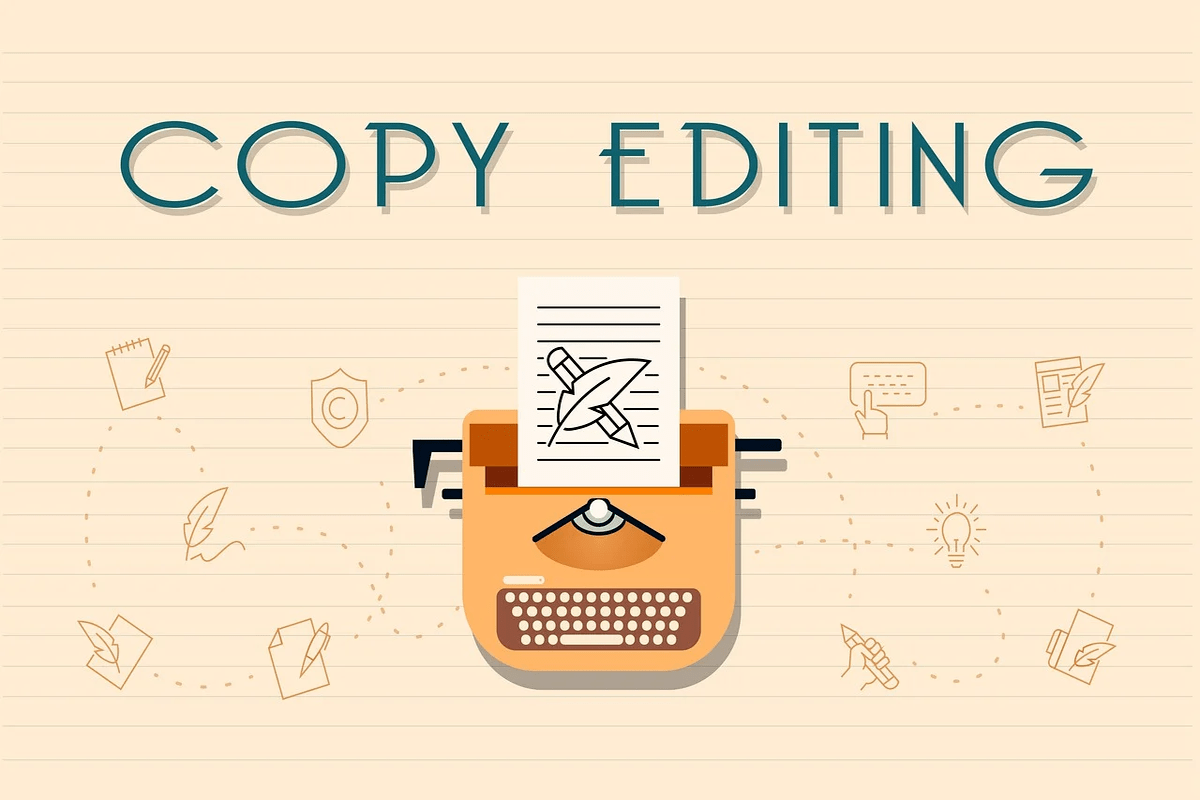Introduction
Copyediting is a part of the manuscript writing process. It helps the author in improving the quality of the manuscript. Not all authors have great command over their English, especially on grammar. At times, the journals reject the manuscript because of grammatical errors and spelling mistakes. Thus, the author must take the services of copyediting agencies to improve the manuscript.
Copyediting
Copyediting a process of checking the content of the manuscript. Copyediting is done by an experienced copyeditor. The function of a copyeditor is to check the grammatical errors, spelling mistakes, syntax, punctuation, and factual errors in the manuscript. Copyediting improves the authenticity of the manuscript and removes any ambiguous information. It also helps to design the content to improve readability and consistency. The copyeditor also checks if the language used is consistent with the technical field and pays attention to the data accuracy.
Difference between Editing and Copyediting
There is a difference between editing and copyediting. The editor may be well-aware of the relevant technical field. The editing involves the collaborative efforts of the editor and author. After editing, there may be substantial changes in the content. The editor may advise the author to change the sentence to make the content clearer. However, the copyeditor is more concerned about the language of the sentence. The copyeditor may not advise the author to completely change the content, but he can advise rephrasing a sentence to make it clear. Further, the copyeditor checks the grammatical and syntax errors and spellings in the content.
Frequently Used Copyediting Phrases
Various copyediting phrases are commonly found in the peer-reviews. These phrases help the author to understand the expectation of reviewers. It also helps in identifying the mistakes that are not to be repeated in future manuscripts. Some of the copyediting notations include clarity, references, is well written, confusing, clarify, typo, tables, titles, transition, and appendix.
Significance of Copyediting
A manuscript is a scientific document that provides useful and practical information to the reader. It is important to note that the reader may apply the theory mentioned in the manuscript in practical life. A significant example, in this case, is an evidence-based treatment, in which the doctor refers to the research articles to find the best possible treatment for their patients. Thus, the manuscript must be written in clear and easy to follow language with a consistent style followed throughout the content. Copyediting the manuscript helps in achieving the above goals. Following are some of the advantages of copyediting a manuscript:
Improve the quality of overall content: The primary purpose of copyediting is to improve the overall quality of the content. By checking all the parameters such as grammar, structure, and consistency, the copyeditor may improve the quality.
Improves accuracy: The copyeditor improves the accuracy of the content. As the copyeditors are not experts in a particular subject, they read the content like a layman. This helps them to ask questions when the content is unclear. It improves the accuracy and flow of the content.
Prevents ambiguity: As manuscripts are important sources of information for doing advanced research or treating a patient. Thus, the writer should avoid sentences that deliver ambiguous information. Copyediting ensures that the manuscript has no ambiguous content.
Choice of correct words: Copyediting helps in optimizing the choice of words. Different technical fields have different sets of words. Using the correct words improves the quality of the paper. Although other words are not wrong, they are just not the best fit in a particular situation.
Accelerates publishing: Copy editing a manuscript helps in accelerating the publication. It is because the reviewers have only to concentrate on the content of the manuscript. There are very fewer chances that the manuscript is sent for revising grammatical errors or structural errors after copyediting.
Reduce rejections: There are chances that the reviewers may reject the manuscript because of several grammatical errors, poor structure, significant ambiguity in the content, and inaccuracy. Copyediting helps in reducing the manuscript rejections.
Consistent abbreviations: There are certain universal abbreviations in a particular technical field, such as the medical field. The copyeditor will also check the consistency of abbreviation throughout the document.
Integrity and confidence: The manuscript flow should be such that it instils a sense of integrity and confidence in the content. Poor grammar, lack of flow, and inconsistency in structure indicate a poor-quality manuscript, and the reader may not use it or cite it during his research. Copyediting improves the overall content and instils confidence in the reader about the content.
Conclusion
Taking the services of a copyeditor has various advantages. The advantages are quality improvement, avoiding ambiguity, reducing rejections, accelerating publications, and improve the authenticity of the manuscript. The manuscript should convey clear and unambiguous information about the research.

